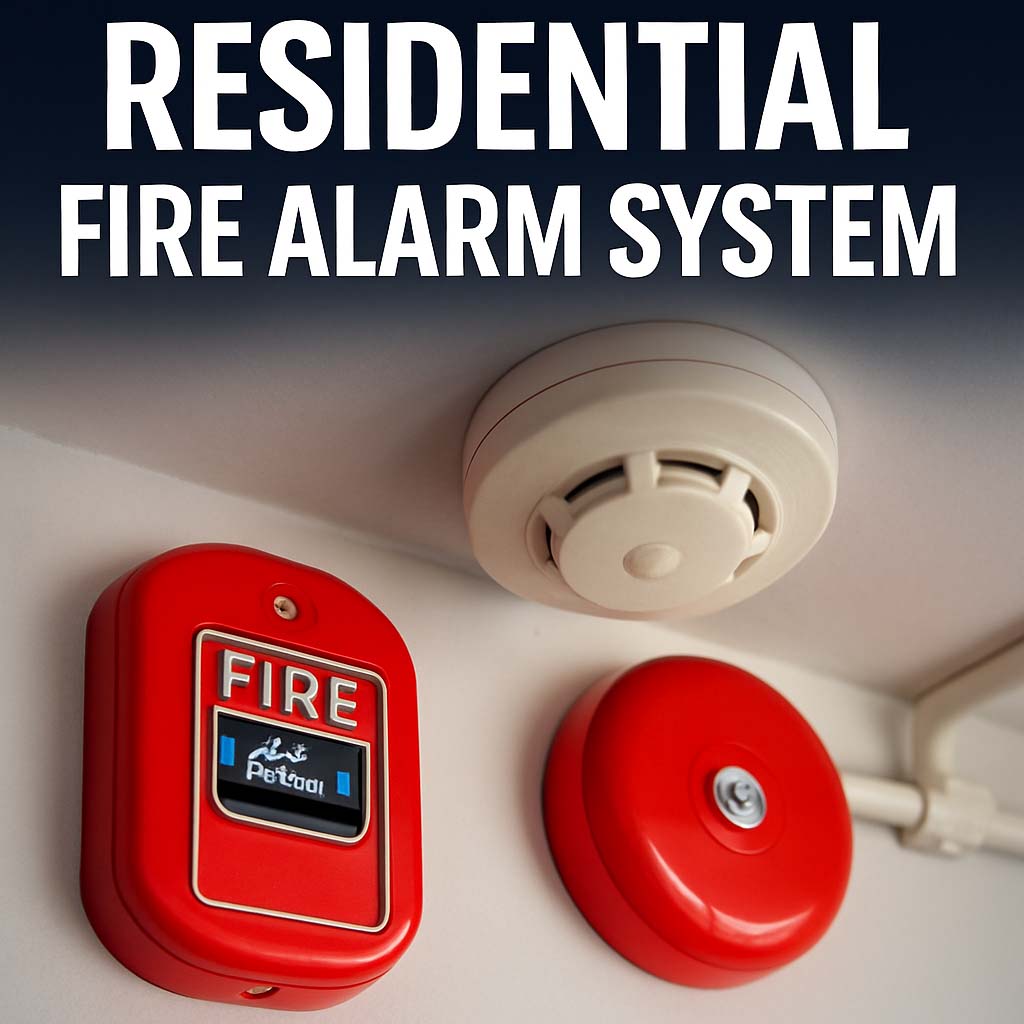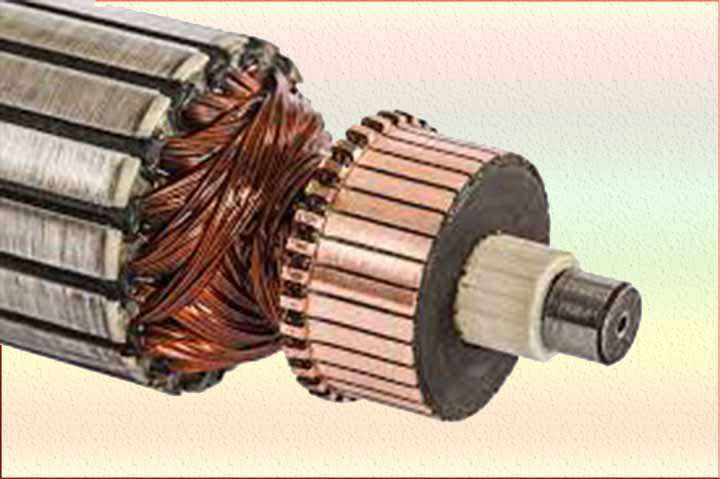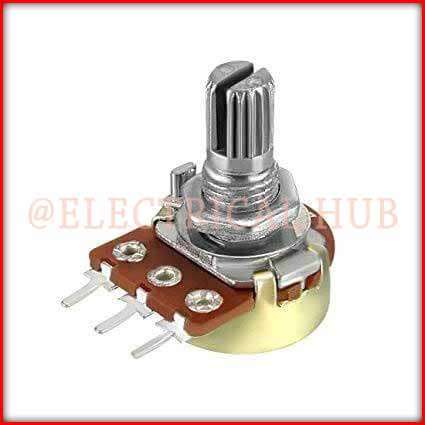Residential Fire Alarm System
A residential fire alarm system is essential for protecting lives and property. Fires in homes can occur suddenly and spread quickly. Early detection is the key to reducing damage and saving lives. A residential fire alarm system is designed specifically for homes and small residential buildings. It provides an early warning that allows residents to escape in time.

What is a Residential Fire Alarm System?
A residential fire alarm system is a network of devices that detect fire and alert the occupants. These systems include smoke detectors, heat detectors, control panels, and alerting devices like sirens or strobe lights. They can be standalone units or part of a larger system connected to emergency services.
Unlike a Commercial Fire Alarm System, residential systems are simpler. They are easier to install and maintain. But that doesn’t mean they’re less important. In fact, a well-maintained residential fire alarm system can be the difference between life and death.
Components of a Residential Fire Alarm System
Understanding the components helps homeowners make informed choices. Here are the basic parts:
- Smoke Detectors: These sense the presence of smoke. They are the most common and crucial part of any fire alarm system.
- Heat Detectors: These respond to high temperatures and are useful in areas like kitchens or garages.
- Control Panel: This is the brain of the system. It monitors sensors and sends alerts.
- Alarming Devices: These include horns, sirens, and strobes to alert occupants.
- Backup Power Supply: This ensures the system works during a power outage.
Types of Fire Detectors Used
There are different types of detectors. Each has its own use-case:
| Detector Type | Function | Ideal Location |
|---|---|---|
| Ionization Smoke | Detects fast-flaming fires | Bedrooms, Hallways |
| Photoelectric Smoke | Detects slow-smoldering fires | Living rooms, Basements |
| Heat Detector | Reacts to rising temperature | Kitchens, Garages |
| Combination | Both ionization and photoelectric | Throughout the house |
How Does a Residential Fire Alarm System Work?
When a fire starts, it produces smoke or heat. The sensors detect these changes. Once detected, they send a signal to the control panel. The panel then activates the alarm devices. If the system is monitored, it also alerts a central monitoring station. This station can contact fire services immediately.
Modern systems can also send alerts to mobile phones. This ensures residents are aware of dangers even if they’re away.
Technical Insights Into Residential Fire Alarm System
Let’s explore the technical side. A typical system includes both hardwired and wireless components. Hardwired systems have all devices connected with cables. Wireless systems use radio signals.
Power Source:
Most residential systems are powered by the home’s electricity. They also include backup batteries. In case of power failure, the batteries keep the system operational.
Communication Protocols:
Some systems use encrypted wireless communication to prevent interference. Wireless Fire Alarm System setups are becoming more popular. They are easy to install and relocate.
Sensor Sensitivity:
Sensors have adjustable sensitivity. This allows fine-tuning for each area. For example, kitchen detectors can be set to ignore small smoke from cooking.
Addressability:
An Addressable Fire Alarm System lets you pinpoint the exact location of the fire. It assigns a unique address to each detector. This is more common in commercial systems, but some high-end residential systems offer it too.
Installation Guidelines
Proper installation is vital. Poor placement or wiring can make the system ineffective. Follow these tips:
- Install smoke detectors in every bedroom, hallway, and living space.
- Place heat detectors in kitchens, attics, and garages.
- Don’t install detectors too close to vents or windows.
- Make sure sirens are loud enough to wake sleeping residents.
Hiring a certified installer is recommended. They ensure the system meets local fire codes.
Maintenance of Residential Fire Alarm System
Maintenance is simple but crucial. A non-functioning system is worse than none. Follow these steps:
- Test alarms monthly.
- Replace batteries at least once a year.
- Clean detectors to remove dust and cobwebs.
- Replace entire units every 10 years.
Smart Residential Fire Alarm System
Technology has evolved. Smart alarms connect to home networks. They can be monitored via smartphones. Notifications, testing, and even silencing the alarm can be done remotely.
These systems often include integration with other smart devices. For example, alarms can trigger smart lights to guide the way out.
Benefits of Installing a Residential Fire Alarm System
The benefits are many:
- Early Detection: Detects fire at its earliest stage.
- Life Safety: Gives you time to escape.
- Property Protection: Minimizes damage.
- Insurance Benefits: Can reduce premiums.
- Peace of Mind: 24/7 monitoring and alerts.
Common Mistakes to Avoid
People often make mistakes that reduce system effectiveness:
- Ignoring false alarms without investigating.
- Not replacing dead batteries.
- Blocking detectors with furniture.
- Skipping regular tests.
Comparison Table: Residential vs Commercial Fire Alarm System
| Feature | Residential Fire Alarm System | Commercial Fire Alarm System |
|---|---|---|
| Complexity | Simple | Complex |
| Cost | Low to Moderate | High |
| Monitoring | Optional | Mandatory in most cases |
| Coverage Area | Small | Large |
| Addressability | Rare | Common |
| Maintenance Requirements | Low | High |
Legal and Regulatory Aspects
Different regions have different laws. Most require smoke detectors in every bedroom and outside sleeping areas. Some jurisdictions require interconnected alarms. Others demand compliance with the National Fire Protection Association (NFPA) codes.
Homeowners should consult local building codes and fire departments. Compliance ensures both safety and legal protection.
Choosing the Right Residential Fire Alarm System
Here’s how to choose wisely:
- Evaluate Your Home Size: Bigger homes need more detectors.
- Decide on Monitoring: Want self-monitoring or professional?
- Check Compatibility: Make sure devices work well together.
- Look for Certifications: UL-listed products are tested for safety.
Integration With Other Systems
Residential fire alarms can work with other safety systems:
- Carbon Monoxide Detectors
- Burglar Alarms
- Smart Thermostats
Integration improves response time. It creates a comprehensive safety net.
Future Trends in Residential Fire Alarm System
Future systems will use AI to reduce false alarms. Cloud monitoring is on the rise. Integration with Wireless Fire Alarm System will become standard. Self-diagnosing sensors and real-time analytics are also being developed.
Final Thoughts
A residential fire alarm system is not optional—it’s essential. It safeguards your family, home, and belongings. Investing in a quality system is one of the smartest decisions a homeowner can make. With the right setup, regular maintenance, and awareness, you can rest assured your home is protected from fire hazards. Choose a system that meets your needs, and never compromise on safety.
Follow Us on Social:
Subscribe our Newsletter on Electrical Insights to get the latest updates in Electrical Engineering.
#FireSafety, #HomeSecurity, #FireAlarm, #SmokeDetector, #HomeProtection, #FirePrevention, #FireAlertSystem, #ResidentialSafety, #EmergencyPreparedness, #SafeHome, #SmokeAlarm, #AlarmSystem, #HomeSafetyTips, #FireHazardPrevention, #SafetyFirst






